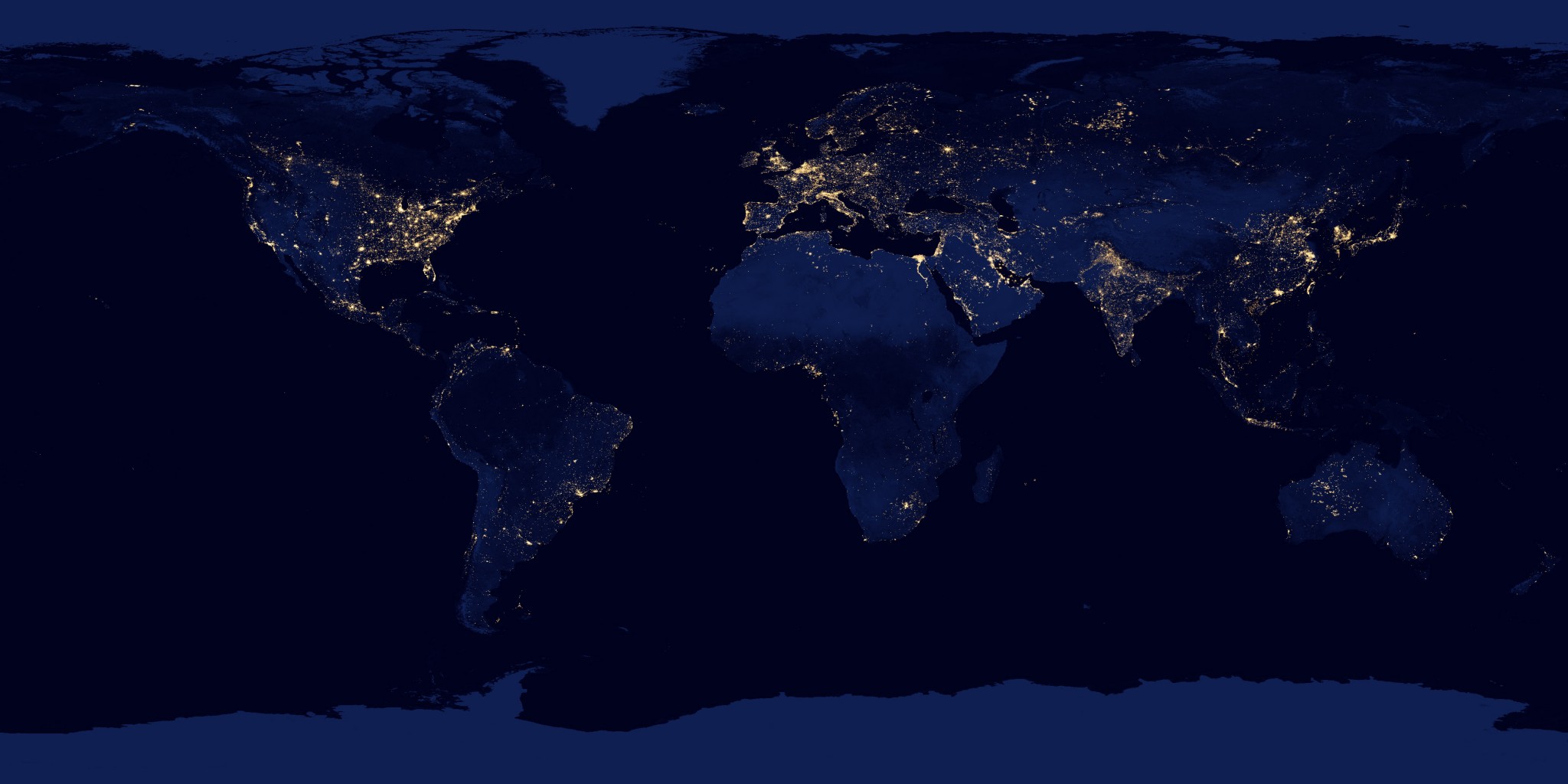Our Sunday Charts
This week we have NASA Earth Observatory’s “Night Lights 2012” as our chart. Isn’t it wonderful?
NASA explains that, “This new image of the Earth at night is a composite assembled from data acquired by the Suomi National Polar-orbiting Partnership (Suomi NPP) satellite over nine days in April 2012 and thirteen days in October 2012. It took 312 orbits and 2.5 terabytes of data to get a clear shot of every parcel of Earth’s land surface and islands.”
Looking at “Night Lights 2012,” you can see that African and South American developing countries and rural areas are primarily dark. By contrast, the U.S. and Europe are brightly lit as are many of the world’s top cities like New York, Chicago, Los Angeles, Buenos Aires, Shanghai, New Delhi, Tel Aviv, Paris, London, Copenhagen, Tokyo and Hong Kong. Also, perhaps the light is bright in the vicinity of the North Dakota Bakken oil shale formation because of natural gas flaring?
These 2010 stats could confirm the absence of electrification in the darker areas of the satellite image.

Our bottom line: In one of his farm journals from 1813, Thomas Jefferson points out that one-half more wool was spun during July than in January because extra daylight hours extended the length of the workday. Whether in 1813, or now where electrification is sparse, the productivity of land, labor and capital is still very much controlled by the sun.
Bedtime Stories… About the Economy.

Elaine Schwartz
Elaine Schwartz has spent her career sharing the interesting side of economics. At the Kent Place School in Summit New Jersey, she was honored with an Endowed Chair in Economics. Just published, her newest book, Degree in a Book: Economics (Arcturus 2023), gives readers a lighthearted look at what definitely is not “the dismal science.” She has also written and updated Econ 101 ½ (Avon Books/Harper Collins 1995) and Economics: Our American Economy (Addison Wesley 1994). In addition, Elaine has articles in the Encyclopedia of New Jersey (Rutgers University Press) and was a featured teacher in the Annenberg/CPB video project “The Economics Classroom.” Beyond the classroom, she has presented Econ 101 ½ talks and led workshops for the Foundation for Teaching Economics, the National Council on Economic Education and for the Concord Coalition. Online for more than a decade. econlife has had one million+ visits.





